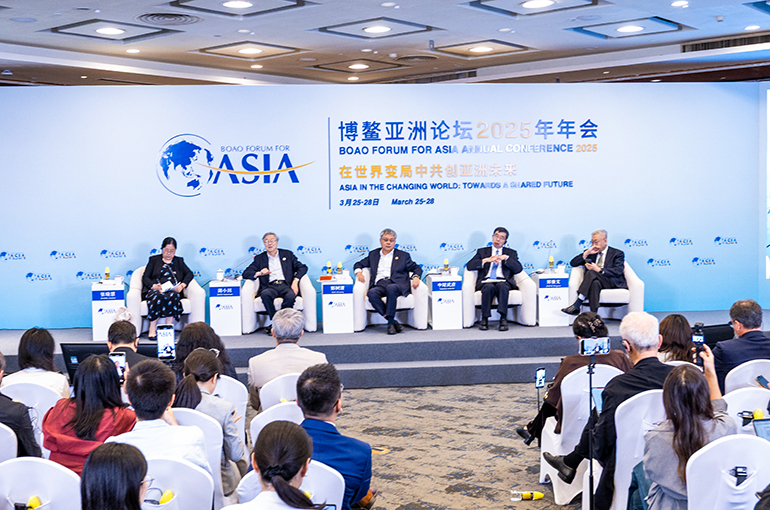 Experts Propose Multi-Pronged Approach to Tackle Asia’s Aging Crisis at Boao Forum
Experts Propose Multi-Pronged Approach to Tackle Asia’s Aging Crisis at Boao Forum(Yicai) March 27 -- The challenges posed by Asia’s rapidly aging society took center stage at a sub-forum of the Boao Forum for Asia Annual Conference 2025 today. Experts put forth suggestions for a range of potential solutions, including pension reforms and improved healthcare provision.
An aging population and pension reform constitute a complex, multi-dimensional dilemma, said Zhou Xiaochuan, vice chairman of and China’s chief representative at the Boao Forum for Asia, as well as former governor of the People's Bank of China. As Asia rapidly ages, problems such as pension fund shortages and insufficient flexibility in social security systems are becoming more apparent.
In 2023, 14.2 percent of Asia’s population was aged 60 and above, signaling that, according to United Nations’ standards, the region has become a greying society.
Measures such as pushing back the retirement age and promoting private pensions fail to address the root problems, said Zhang Xiaohui, vice president of the China Society for Finance and Banking and former assistant governor of the PBOC.
Asian countries need to adopt a range of solutions, such as developing caregiving robots and restructuring industries, to alleviate the socioeconomic impacts of aging populations, said Takehiko Nakao, chairman of Sumitomo’s Center for International Economy & Strategy and former president of the Asian Development Bank.
Policy-level discussions focused on optimizing pension systems. China’s basic pension system is comprised of three pillars, namely the state pension, corporate annuities and private pensions for individuals, said Guo Shuqing, former chairman of the China Banking and Insurance Regulatory Commission.
Guo proposed adding a ‘fourth pillar’ of ‘combining medical and elderly care services’ and even a ‘fifth pillar’ of ‘recognizing personal and family wealth.’ More coordination between these pillars is needed and there should not be too much reliance on a single pillar, he added.
Governments can consider restructuring corporate annuity pooled plans to make them more accessible to individual pensions, said Zheng Bingwen, director of the World Social Security Research Center at the Chinese Academy of Social Sciences.
Disparities across groups, regions as well as urban and rural areas should be narrowed, Guo said. Last year, China’s employee pension payouts were about 14 times higher than those for ordinary residents, he added.
Editor: Kim Taylor